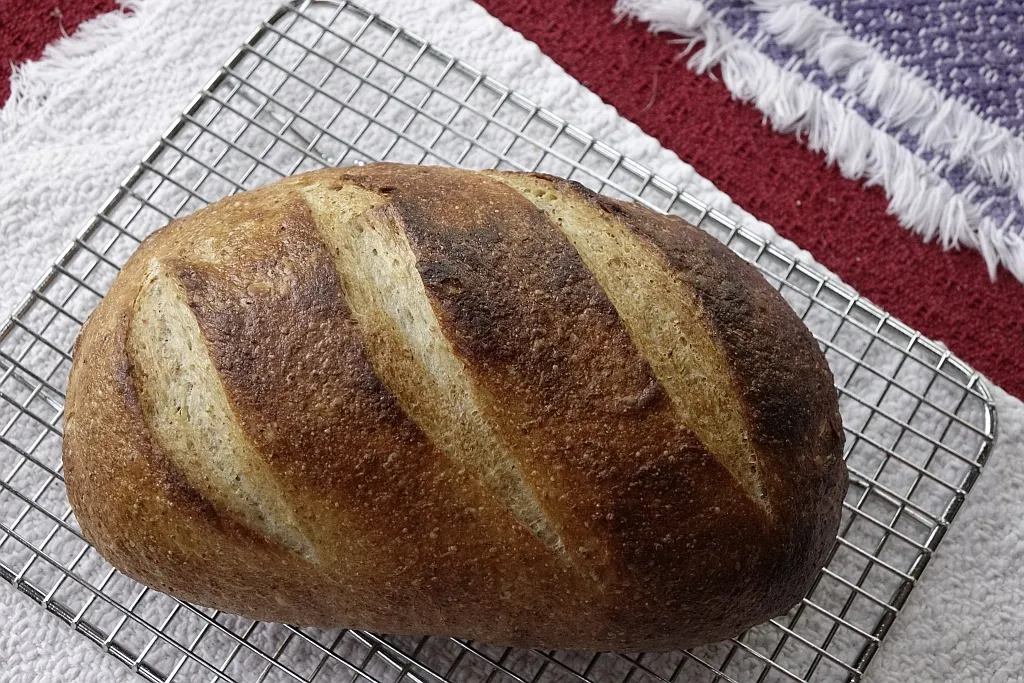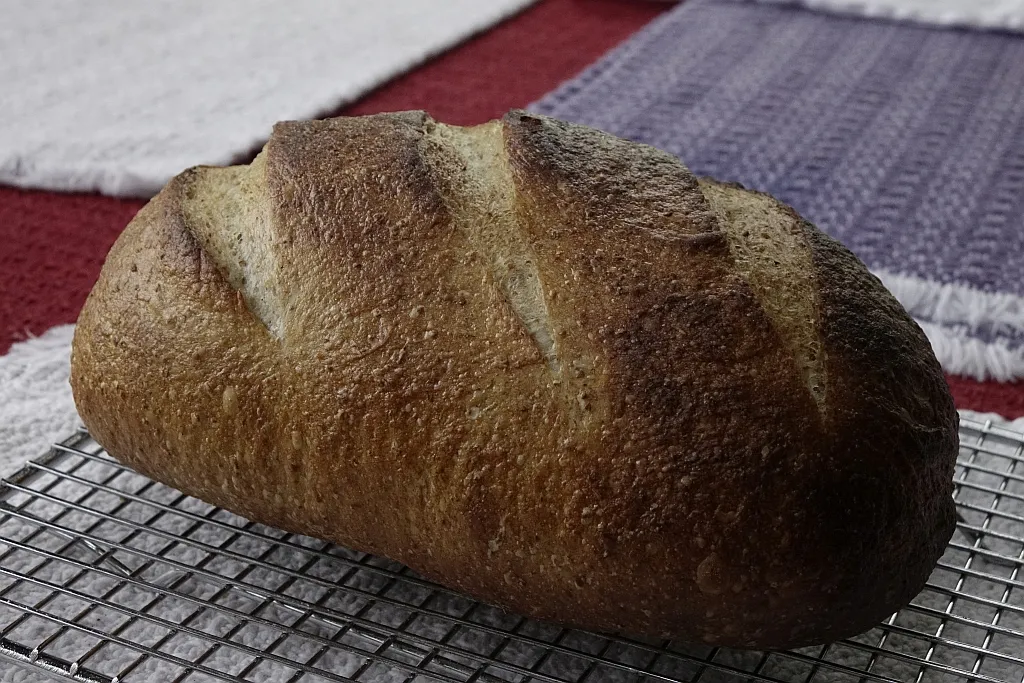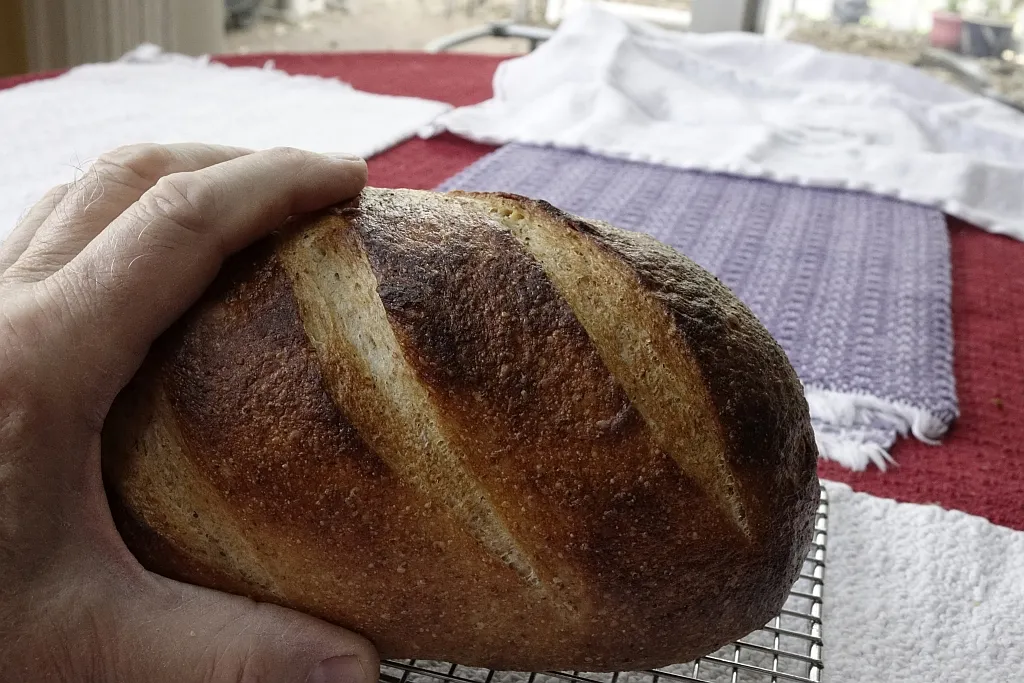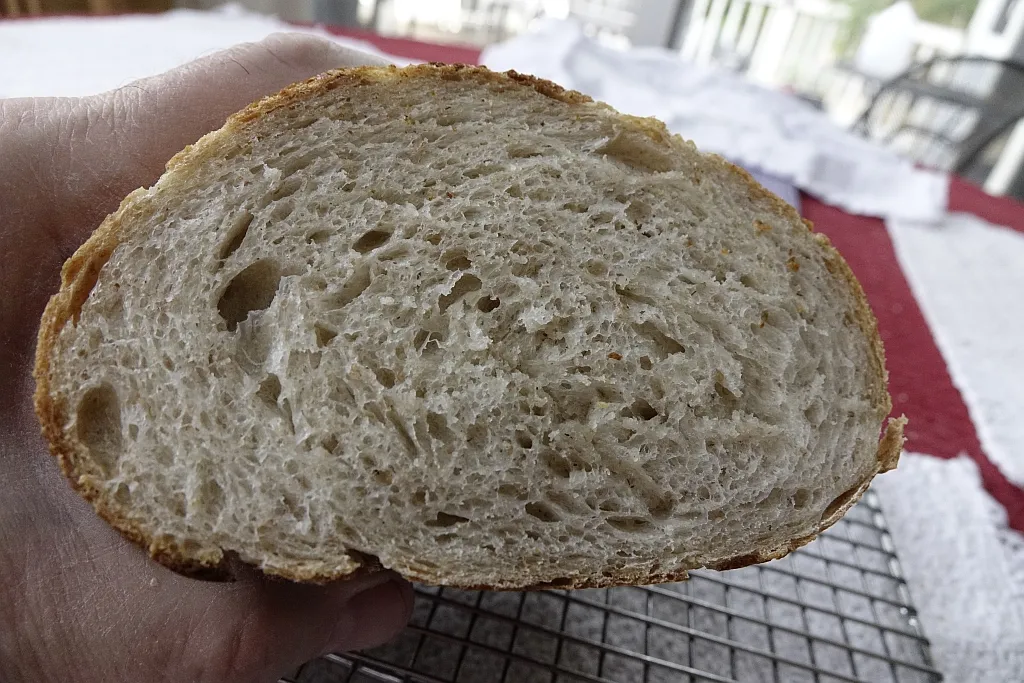
My electric stove oven has the usual upper and lower heating elements. It also has some mysterious heat source in the middle, possibly a bit of convection oven effect. The stove is more that 30 years old. The bottom element has completely failed. It seems to have gotten weaker over several weeks and now it's dead.
My baking setup uses a large baking steel in the middle rack and a steam pan with rocks in the bottom rack. I check temperatures with an infrared thermometer.
With the bottom element dead and the baking steel blocking most of the air circulation, the steam pan couldn't generate steam. The IR thermometer shows that it was barely getting over steam temperature. Bread bakes weren't cooking the bottom and were burning the tops, and virtually no steam was getting produced.
Here's what I worked out for baking decent loaves anyway. They aren't as good nor as uniformly browned as usual, and the loaves tend to retain more moisture than I'm used to, but the bread is very good anyway.
I took out the baking steel because it blocked hot air circulation to the bottom of the oven. I proofed my loaves on parchment paper in a small baking sheet, chosen so that more air could circulate. I preheated longer, I used less water to make steam, and I pre-heated it to boiling in the microwave before pouring it into the steam pan. Note that the baking sheet was not preheated.
The temperature control was a little squirrelly and tended to burn so I used a lower setting than normal.
After 20 minutes the loaf would be nearly as brown on the top as I like, but the bottom would be nearly white. I turn the loaf upside down in the baking pan an bake for another 15 minutes. At this point the bottom is usually browned enough and the internal temperature of the loaf is high enough to take the loaf out.
You will see in the photos that the loaf is not as evenly browned, but otherwise is very respectable. This loaf used 300g of flour - 5% rye, 10% whole wheat, King Arthur Bread Flour for the rest - 65% hydration, 8% inoculation leading to long fermentation times. It tastes good, too!
One lesson is to not stress about exact oven temperatures and times. They are hardly ever critical to the quality of a bake.



Replacing that lower element is an easy and pretty cheap job on most ovens and especially on old ones.
I wasn't sure because this is an unusual stove, but I just learned that there is a replacement element and it should be installed early next week.